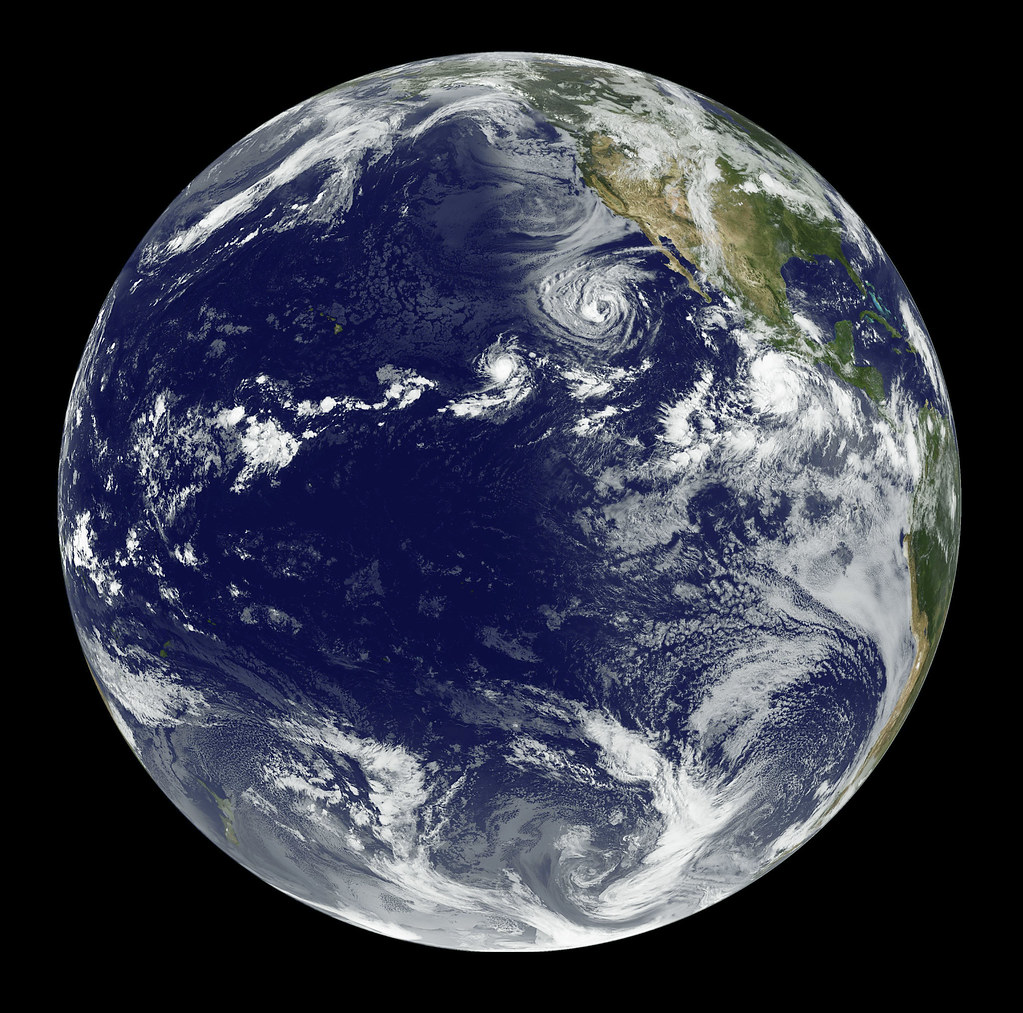Climate change: a straightforward tale of a warming planet right? Not quite. Beneath the global narrative lies a puzzling anomaly — a vast stretch of the Pacific Ocean defying trends by cooling over the last 40 years. Why this is happening remains a mystery. Could this Pacific cooling be a good thing or could the potential consequences devastate populations from coast to coast? Unraveling this enigma is crucial, now more than ever.
They call it the “cold tongue”, a region of decreasing sea surface temperatures (SSTs) running along the equator for thousands of miles. Previously, the eastern Pacific Ocean maintained a temperature that was 5-6°C cooler than its western counterpart. However, since 1980, this temperature gap has increased by 10%, defying the expectations set by climate models. These models had long forecasted a shift towards an El Niño phase, characterized by unusually warm surface waters in the eastern part of the ocean. Contrary to these forecasts, the Pacific has persistently exhibited a La Niña phase, marked by consistently colder ocean temperatures along the Equator.
These models’ inaccuracies were often blamed on sulfate aerosols and the El Niño Southern Oscillation (ENSO)—a climate cycle influencing tropical Pacific sea temperatures. Challenging these views, Seager and Cane proposed a “dynamic coupling” between the atmosphere and ocean. This theory suggests the ocean adapts to rising sea surface temperatures, due to greenhouse gasses, by absorbing more heat and changing currents. This would impact climate patterns and weather dynamics.1
Yet, this explanation only begins to unravel the “cold tongue” puzzle. Antarctic glacier melt and the resulting Southern Ocean cooling also play a pivotal role. As glaciers melt, they release meltwater which works with ozone depletion-altered wind patterns to amplify cold air currents, thus influencing Pacific temperatures.5 In tandem, climate change’s effect on wind patterns and upwelling mechanisms introduces cold, deep water to the surface. This process is intricately linked to the cooling observed in the Southern Ocean, a dynamic that leads to stronger trade winds. In turn, the winds enhance the cooling and upwelling in the eastern Pacific—a significant aspect often overlooked by climate models.3
If scientists are aware of the contributing factors, why does this phenomenon remain one of the most significant unresolved issues in climate science? Why do we need to know how this cooling effect developed, and why must we calculate it into our projections? The answer: its potentially devastating consequences.
While it is true that when factored into climate models, prolonged Pacific cooling could potentially reduce global warming impacts by up to 30%, this comes with significant uncertainties and risks.6 Ongoing La Niña events or “cold states,” weaken the Pacific jet stream and disrupt weather patterns worldwide. In the Atlantic, this might decrease wind shear, increasing the frequency of powerful hurricanes. Meanwhile, in North America, changes in atmospheric circulation may reduce moisture levels, leading to severe droughts from Texas to California.
Without grasping the causes of the “cold tongue” or predicting its course, we stand unprepared for its effects, ranging from disrupted weather patterns to potential shifts in climate trends. Updating climate models to incorporate this anomaly is imperative for accurately forecasting and mitigating climate change’s impacts.4 This endeavor is critical not only for environmental protection, but also for adaptation and for securing a resilient future for communities across the globe.
References
- Cane, M. A., Clement, A. C., Kaplan, A., Kushnir, Y., Pozdnyakov, D., Seager, R., Zebiak, S. E., & Murtugudde, R. (1997). Twentieth-Century Sea Surface Temperature Trends. Science, 275(5302), 957–960. https://doi.org/10.1126/science.275.5302.957
- Goddard Space Flight Center – NASA – 2017. https://www.nasa.gov/goddard/.
- Heede, U. K., Fedorov, A. V., & Burls, N. J. (2020). Time Scales and Mechanisms for the Tropical Pacific Response to Global Warming: A Tug of War between the Ocean Thermostat and Weaker Walker. Journal of Climate, 33(14), 6101–6118. https://doi.org/10.1175/JCLI-D-19-0690.1
- Henson, B. (2023, April 24). A mystery in the Pacific is complicating climate projections » Yale Climate Connections. Yale Climate Connections. http://yaleclimateconnections.org/2023/04/a-mystery-in-the-pacific-is-complicating-climate-projections/
- Lee, S., L’Heureux, M., Wittenberg, A. T., Seager, R., O’Gorman, P. A., & Johnson, N. C. (2022). On the future zonal contrasts of equatorial Pacific climate: Perspectives from Observations, Simulations, and Theories. Npj Climate and Atmospheric Science, 5(1), 1–15. https://doi.org/10.1038/s41612-022-00301-2
- Madeleine Cuff. (2023, August 1). Something strange is happening in the Pacific and we must find out why. New Scientist. https://www.newscientist.com/article/mg25934500-100-something-strange-is-happening-in-the-pacific-and-we-must-find-out-why/
